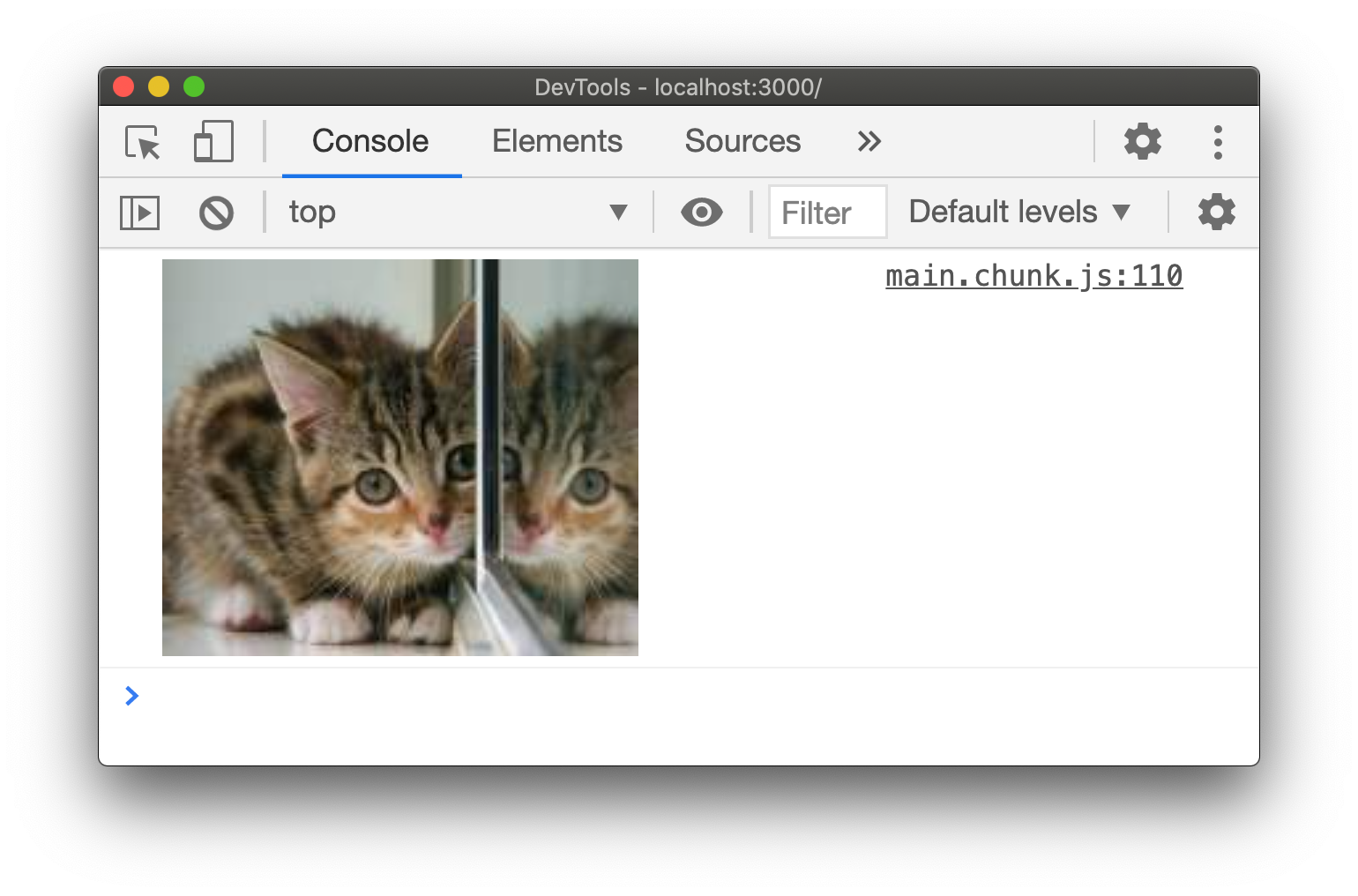README
React Console
A reconciler for rendering components to the browser's console, because why not.
import React from "react";
import console from "react-console";
const name = "Chris";
const color = "#21a0a0";
console.log(
<div>
Hello,{" "}
<strong>
<em style={{ color }}>{name}</em>
</strong>
!
</div>
);

Usage
Install
Add react-console as a dependency to your project.
npm install react-console
Console
react-console exports a console context with an additional render method.
This can be used as a replacement to the global console object, however it
allows rendering of React components.
Methods
The following methods will render a component if the first and only argument is a React element.
.log.info.debug.warn.error.group.groupCollapsed.trace
Render
The methods above are just sugar for the render method.
import React from "react";
import console from "react-console";
console.render(<span>Ouch</span>, window.console, "error");
// same as
console.error(<span>Ouch</span>);
Anchors
Anchor elements will have their hrefs appended.
import React from "react";
import console from "react-console";
console.log(<a href="https://google.com">Google</a>);

Images
You can render images however you must provide width and height props.
import React from "react";
import console from "react-console";
console.log(
<img
alt="Random kitten"
src="http://placekitten.com/180/150"
width={180}
height={150}
/>
);

User Components
You can render any user defined component as long as they result to host components that are supported.
import React from "react";
import console from "react-console";
function Diff(props) {
return (
<>
<del style={{ color: "red" }}>{props.previous}</del>
<span> → </span>
<ins style={{ color: "green" }}>{props.next}</ins>
</>
);
}
console.log(<Diff previous="foo" next="bar" />);

Caveats
One-time log
Logs are a one-time render, meaning components can't cause console logs. Therefore use of hooks will not work. Nor will self updating components via component lifecycles.
Logging elements
To log the element object itself instead of rendering you can do this:
console.log("%o", <Foo />);
// or
window.console.log(<Foo />);
No block or layout elements
The console will only create spans for substitutions and removes any block
styling. Trying to style complex layouts in the console won't work.
However, you can try create block-like logs with a little padding trick.
import React from "react";
import console from "react-console";
function ColorBlock(props) {
return (
<div
style={{
// use left/top paddings as if they were width/height
paddingLeft: "32px",
paddingTop: "32px",
// set the font size to zero
fontSize: 0,
backgroundColor: props.color,
}}
>
{/* render an empty string */}{" "}
</div>
);
}
console.log(
<>
<ColorBlock color="red" />
<ColorBlock color="orange" />
<ColorBlock color="yellow" />
<ColorBlock color="green" />
<ColorBlock color="blue" />
<ColorBlock color="indigo" />
<ColorBlock color="violet" />
</>
);
